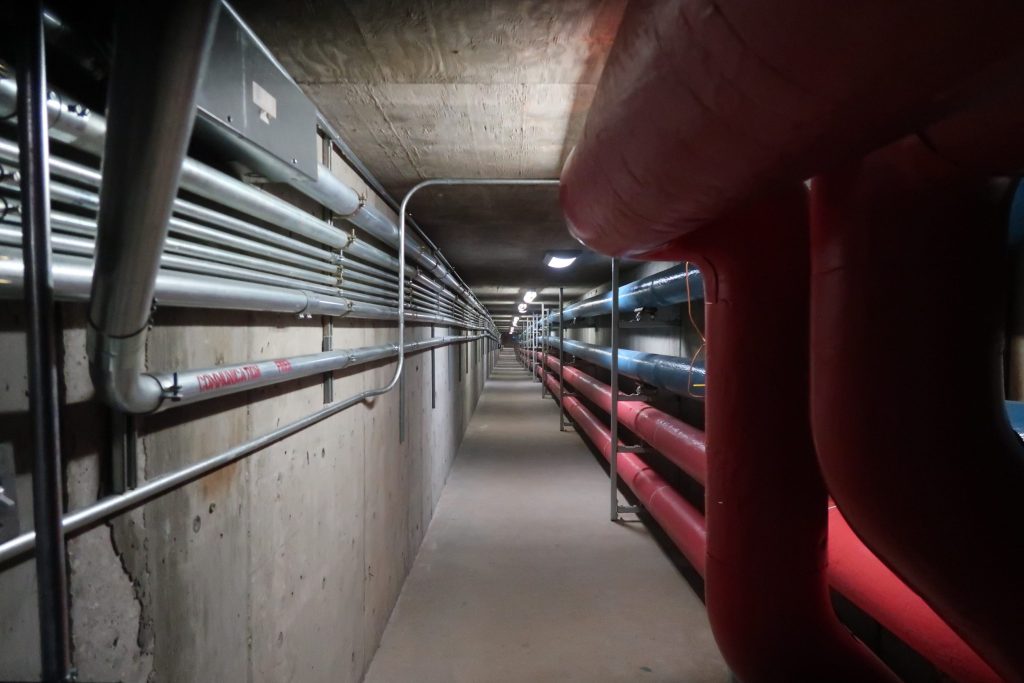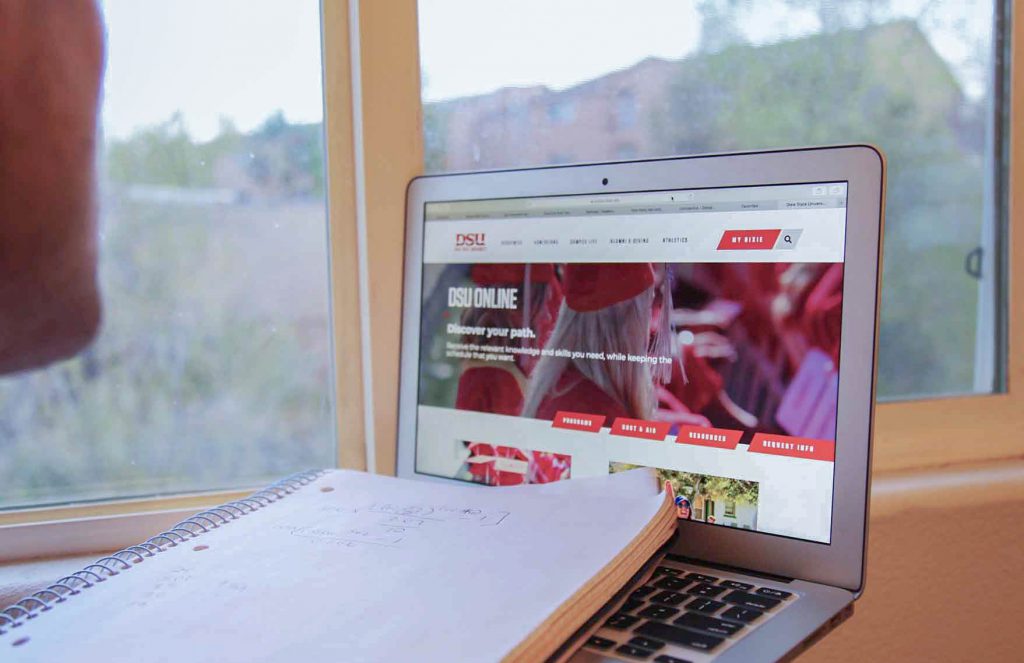Beneath Dixie State University lies an intricate system of tunnels that connect to most major buildings on campus.
The tunnels were first approved in 1975, director of facility operations and energy, Bruce Peacock, said. Since that time, DSU has added to the tunnels every time a new building was constructed.
The first phase when creating a new building on campus is to dig down and connect a new part of the tunnel system. Once the tunnel has been constructed, the actual infrastructure is built. This takes a month or two to complete, but once it’s finished the new building is connected to the other main structures on campus, making work easier and cheaper to complete for years to come.
The tunnels run at about 6.5 feet high and 6 feet wide in most places. In all, there are approximately 1.5 miles of tunnel underneath campus.
They were originally built in the shape of a “U,” with small passages running from the main shaft, but the plan is to eventually make it a complete loop that gives staff members access to the entire campus.
Peacock said the tunnels are also some of the cleanest and most well-maintained tunnels that exist in the country. Jeff Hunt, an electrician at the heating plant, said he has worked in tunnels all over the state of Utah, and DSU’s are by far the cleanest he’s seen.
Walking through the tunnels makes it clear they are well cared for. With adequate lighting and well-organized and clearly labeled pipes, the tunnels were a pleasant place to spend an afternoon (although without a guide it would have been almost impossible to find a way out).
Hunt said the tunnels have five uses: cooling, heating, high speed internet, phone system and electrical. The main use is to run hot and cold water through the entire campus. The only people with access to the tunnels are groundskeepers and electricians, and they mostly use them for maintenance purposes. However, Kerry Dillenbeck, a HVAC specialist for the heating plant, said they often use the tunnels in the winter to get from building to building without having to walk through the cold.
Peacock said the tunnels are used almost every day, giving mechanical staff the ability to get around campus, but also allowing them to have constant eyes and ears on the mechanics inside the tunnel.
“Our preventative maintenance department will go through all of campus quarterly, through every piece of equipment on campus and check it out,” Peacock said.
An important function of the tunnels is to provide heating and air conditioning to almost every building on campus. Because the school uses the tunnels to heat and cool the buildings, the school saves thousands of dollars every year. Peacock said the school has been lucky to have the tunnels because it adds a maintenance component and a convenience component.
They also contain network connections for energy and utility metering, as well as back door entrance to maintenance rooms in various buildings on campus, making it easy for staff to get into those rooms when needed.
The tunnels are an intricate and important part of the campus, and the university relays heavily on them. While the idea of trying to find and explore this underground maze may seem like an interesting idea, it’s best not to risk interrupting the staff and risk endangering yourself for the sake of an Instagram photo.



